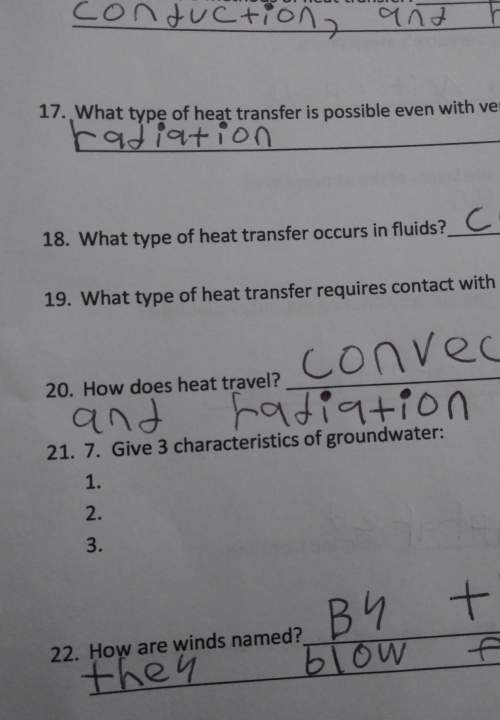
Physics, 19.09.2019 13:30, amazeking3545
In the copper plating solution lab, you placed copper (cu) pennies in vinegar. vinegar is a weak acid with hydrogen ions (h+). when you put the pennies in the vinegar, you should have observed small gas bubbles. what were these bubbles composed of, and how did they form

Answers: 1
Other questions on the subject: Physics

Physics, 21.06.2019 19:30, yomamaisfat1519
Abody of weight 60 kg is standing in a lift the lift going upward with a uniform velocity of 4.9 metre per second slows down and stops in two seconds then apparent weight of the body during the slow down process is
Answers: 2


Physics, 21.06.2019 22:30, mirellaenriquez5529
Follow these directions and answer the questions. 1. shine a pencil-thin beam of light on a mirror perpendicular to its surface. (if you don't have a laser light as suggested in the video, you can make a narrow beam from a flashlight by making a cone from black construction paper and taping it over the face of the flashlight.) how does the light reflect? how does the relationship of incident to reflected ray relate to the reflection of water waves moving perpendicular to a barrier? 2. shine a pencil-thin beam of light on a mirror standing on a sheet of paper on the table (or floor) so that you can mark the incident ray and reflected ray. (you can support the mirror from the back by taping it to a wooden block.) 3. mark a line on the paper representing the reflective surface. (the reflective surface of a mirror is usually the back edge.) 4. draw a dashed line perpendicular to the mirror surface at a point where the incident and reflected ray meet. this perpendicular is called a normal to the surface. 5. measure the angles between the rays and the normal. the angle of incidence is the angle formed by the incident ray and the normal to the surface. the angle formed by the reflected ray and normal is called the angle of reflection (r). what is the angle of incidence? what is the angle of reflection? 6. repeat for several different angles. (see report sheet for details.) what appears to be the relationship between the angle of incidence and angle of reflection? in science 1204, what was the relationship for these two angles made by the reflection of waves in a ripple tank? 7. roll a ball bearing so that it hits a fixed, hard surface (a metal plate) at several angles (including head-on). observe the way in which the ball bearing reflects. what generalization can you make about how a ball bearing reflects from a wall? have you proved that light can only behave like a wave?
Answers: 1

Physics, 22.06.2019 00:00, raeganwelch
Ahypothesis is? close agreement by competent observers of observations of the same phenomena. a guess that has been tested over and over again and always found to be true. an educated guess that has yet to be proven by experiment. the long side of a right triangle. a synthesis of a large collection of information that includes guesses.
Answers: 2
Do you know the correct answer?
In the copper plating solution lab, you placed copper (cu) pennies in vinegar. vinegar is a weak aci...
Questions in other subjects:

Chemistry, 01.10.2019 13:10

Physics, 01.10.2019 13:10

Chemistry, 01.10.2019 13:10


English, 01.10.2019 13:10

English, 01.10.2019 13:10



English, 01.10.2019 13:10

Business, 01.10.2019 13:10







